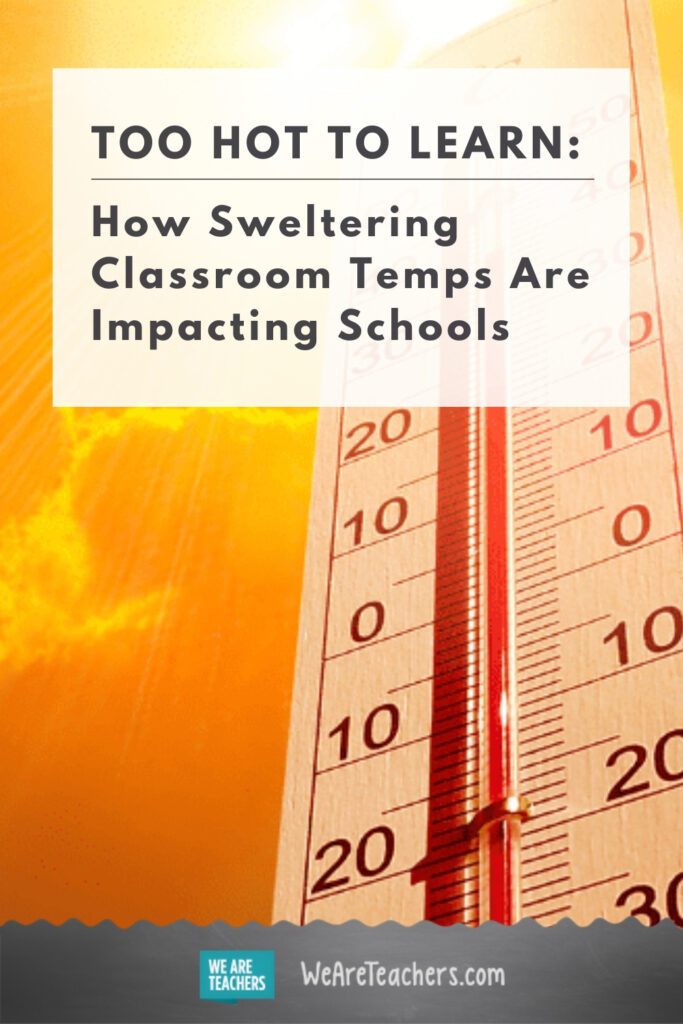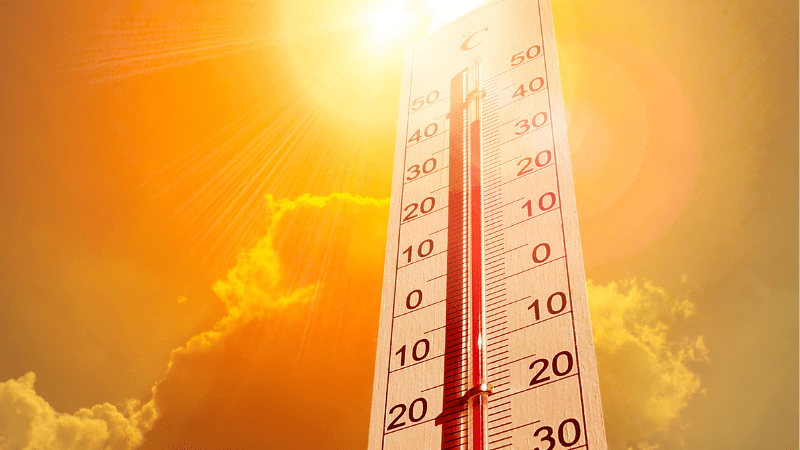Hot classrooms: it’s a hot button issue for many of the country’s schools returning to the classroom this month. Efforts to extend learning time in the name of equity and achievement have led to earlier start dates in August. And students and teachers are feeling the negative effects of stifling, steamy classrooms.
Nearly half of America’s hot classrooms are not equipped with air conditioning.
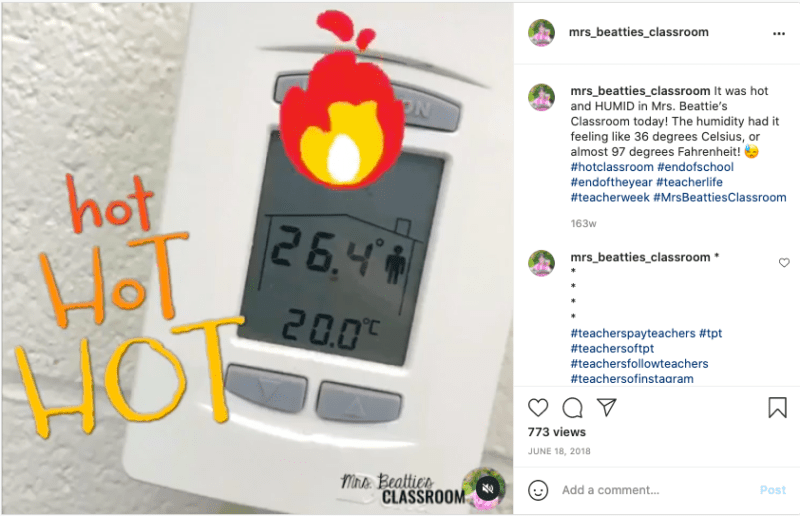
Source: @mrs_beatties_classroom
According to research led by Harvard social scientist Joshua Goodman, approximately 42 percent of U.S. classrooms lack any, or adequate, air conditioning. Teachers are left to rely on ineffective fans, open windows and water bottle spritzes. Or they take students outside in the shade where they can catch a cross breeze.
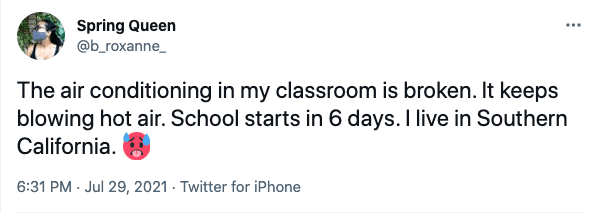
Source: @b_roxanne
[contextly_auto_sidebar]
But AC is not necessarily the silver bullet.
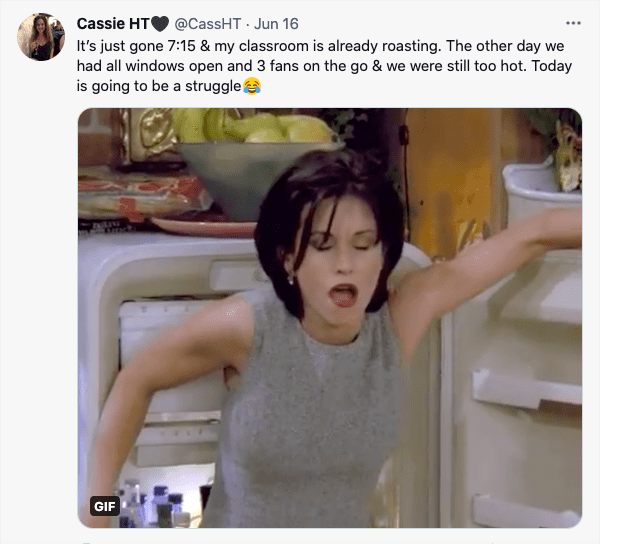
Source: @CassHT
Equipping schools with adequate cooling systems seems to be the most logical response, but the energy-guzzling effects of air conditioning lead to the conundrum that author Stephen Buranyi of The Guardian calls the “air conditioning trap.”
“Air conditioners are almost uniquely power-hungry appliances,” he explains, “A small unit cooling a single room, on average, consumes more power than running four fridges, while a central unit cooling an average house uses more power than 15.”
Simply put, the warmer it gets, the more we use air conditioning. The more we use air conditioning, the warmer it gets.
Solar-powered air conditioning is a possible solution, but the technology is expensive and not fully developed, therefore not yet practical for most school districts.
Climate change will likely make the problem worse in coming years.
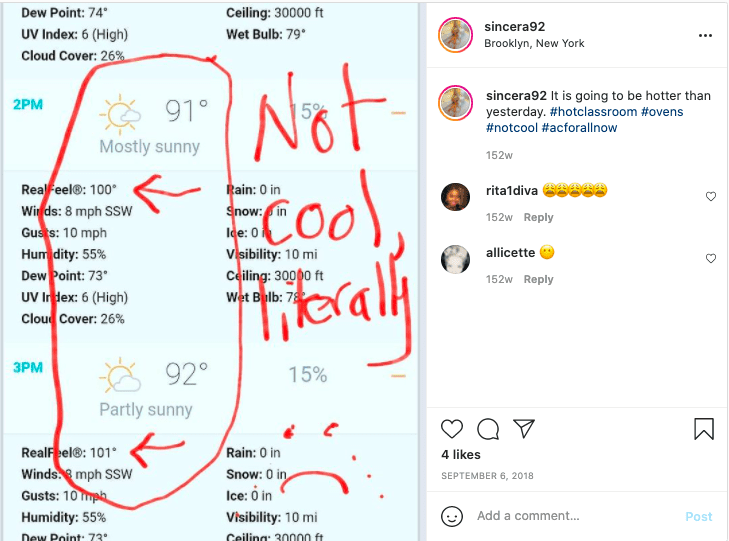
Source: @sincera92
According to NASA climate scientists, “Summer temperatures are projected to continue rising, and a reduction of soil moisture, which exacerbates heat waves, is projected for much of the western and central U.S. in summer. By the end of this century, what have been once-in-20-year extreme heat days (one-day events) are projected to occur every two or three years over most of the nation.”

Source: @Amya_joor
So what’s the solution?
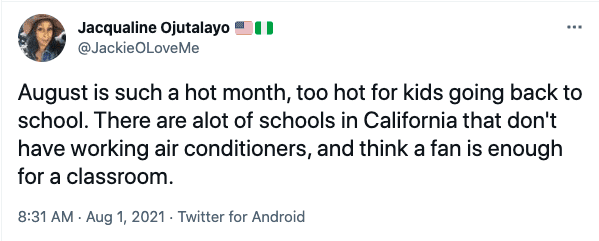
Parents in one Louisiana school district have called for start dates to be pushed until after Labor Day, saying changing schools’ start dates could help prevent heat-related illnesses, avoid the peak of hurricane season, and save the district money by decreasing energy bills.
Denver Public Schools have also pushed their start date this year from early August to weeks later due to the heat and the pandemic combined. Apparently, wearing a mask in a 94-degree classroom isn’t conducive to optimal learning.

Source: @probsurteacher
Some schools are sending kids home when it’s too hot to learn. An article in Education Week reports that the Baltimore public school system will dismiss some schools three hours early when the temperature in most classrooms reaches 85 degrees or the outside heat index reaches 100 degrees by 10:30 a.m. But how do those schools propose to make up for lost learning time?
Perhaps the solution is an adapted school day, with in-person classes during cooler hours and virtual learning when temperatures peak. Then, once the heat subsides in the fall, students would return to full-time in-person learning. But what if children learning at home don’t have adequate climate control? And what about transportation? Now it becomes an equity issue.
There’s no doubt about it; hot classrooms make it harder for students to learn. But the issue is complicated. As climate change continues to affect temperatures in schools, it is going to take a concerted effort on the part of schools, families and school districts to tackle the problem.
How do you beat the heat in your classroom? Please share in the comments below.
And check out How to Help Kids Cope With Climate Change Anxiety.
